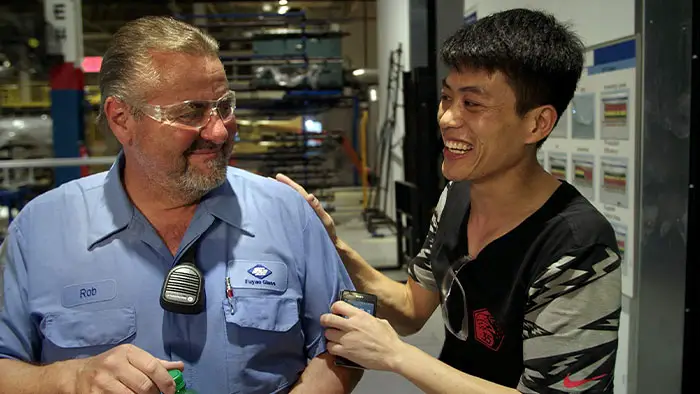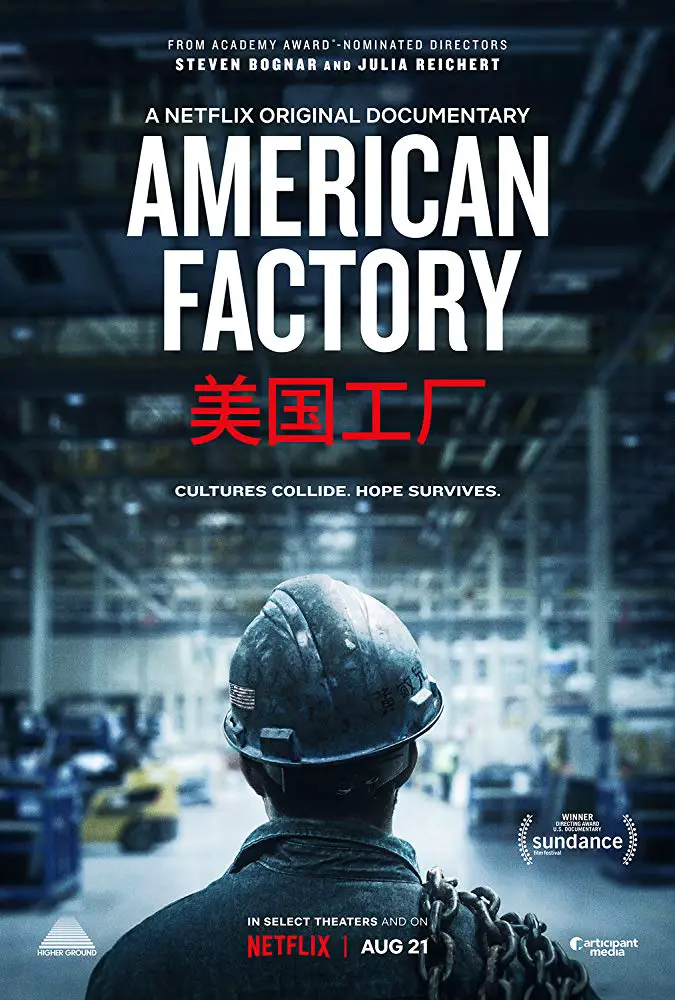
In our minds, this idea of globalism is a noble one, and efforts to reach across the ocean are again…a noble one. But when put into practice, it’s an entirely different matter. In Steven Bognar and Julia Reichert’s American Factory, their cameras are right in there with the opening of the Fuyao factory in Dayton, Ohio, and its epic clash of cultures.
At the end of 2008, GM closed its plant in Dayton, Ohio, leaving thousands of its citizens unemployed. The city was never the same thanks to mass foreclosures and bankruptcies. Seizing upon the opportunity to lower its expenses, China-based glass manufacturer Fuyao makes an investment in Dayton producing glass windshield for the top auto manufacturers. The economics are smart. You’d save millions on ocean transport, customs fees, and tariffs by producing the glass in the U.S.

“China-based glass manufacturer Fuyao makes an investment in Dayton producing glass windshield…”
In 2013, Fuyao is about to complete its factory and begins the process of hiring locals—many of whom are grateful for any kind of steady work. But even from the start darks clouds start to form. During Fuyao’s grand opening in early 2014, Ohio Senator Sherrod Brown sneaks in the U-word (Union) into his welcome speech, and the Chinese executives are furious.
Several themes are at play in American Factory. First, is hope. Dayton was a city that never recovered adequately from the 2008 recession, and the opening of a new plant would bring in thousands of jobs to a grateful community and higher profits for its foreign owner. As they say, though, “a bird in the hand…” What do these jobs mean when expectations fail to match reality and a working wage comes at a high price.
The second theme is cultural acceptance. In my life experience, I was an Asian growing up in Western society and long-term, I had to meld my familial culture of China with that of my permanent home in the States. It is a vastly different learning experience for the citizens of Dayton to welcome new Chinese executives and workers accustomed to the harsh conditions in China. To their credit, both sides make an earnest attempt to get along. How far have we come as a society? To my recollection, I don’t believe Bognar or Reichert ever documented a case of real “racism” in their film.

"…in China, its lower-class citizens literally slave away at their jobs."


